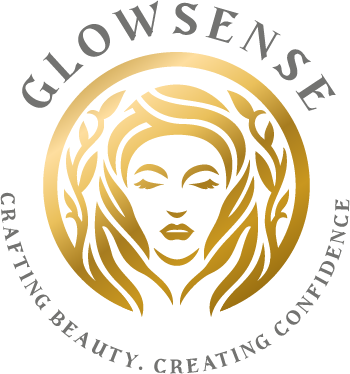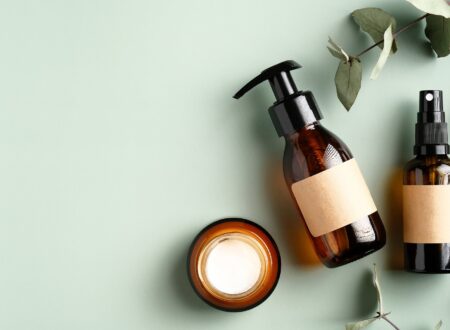Creating a skincare routine that suits your skin type and addresses your specific concerns is essential for achieving and maintaining healthy, glowing skin. With the overwhelming number of products and advice available, it can be challenging to know where to start. In this comprehensive guide, we’ll break down the steps to building an effective skincare routine that works for you.
1. Understanding Your Skin Type
The first step in creating a skincare routine is understanding your skin type. Your skin type determines the kinds of products that will work best for you. The main skin types are:
- Normal Skin: Balanced, not too oily or dry.
- Oily Skin: Prone to excess oil and shine, with larger pores.
- Dry Skin: Lacks moisture, often feels tight or flaky.
- Combination Skin: A mix of oily and dry areas, typically with an oily T-zone (forehead, nose, chin) and dry cheeks.
- Sensitive Skin: Easily irritated, prone to redness and reactions.
Identifying your skin type will help you choose the right products and ingredients.
2. The Basics of a Skincare Routine
A basic skincare routine typically consists of three key steps: cleansing, toning, and moisturizing. Let’s dive into each step:
-
Cleansing: Start with a gentle cleanser that removes dirt, oil, and makeup without stripping your skin of its natural oils. Cleansing twice a day—morning and night—is ideal for most skin types. If you have dry or sensitive skin, opt for a hydrating or soothing cleanser. Oily or acne-prone skin may benefit from a cleanser with salicylic acid or benzoyl peroxide.
-
Toning: Toning helps balance the skin’s pH and prepares it for better absorption of other products. Choose a toner based on your skin type: hydrating toners for dry skin, clarifying toners for oily skin, and calming toners for sensitive skin. Toners can also help to remove any remaining impurities after cleansing.
-
Moisturizing: Moisturizing is essential for all skin types, as it helps maintain the skin’s moisture barrier. Choose a lightweight, non-comedogenic moisturizer if you have oily skin, and a richer, creamier formula if you have dry skin. For combination skin, consider using a gel-based moisturizer on oily areas and a creamier one on dry areas.
3. Building on the Basics: Additional Steps
Once you’ve established a basic routine, you can add more steps to address specific skin concerns:
-
Exfoliation: Exfoliating 1-3 times a week helps remove dead skin cells, revealing smoother, brighter skin. Choose a chemical exfoliant with AHA or BHA for a gentler approach, or a physical scrub if your skin can handle it. Be careful not to over-exfoliate, as this can irritate your skin.
-
Serums: Serums are concentrated treatments that target specific concerns, such as aging, hyperpigmentation, or hydration. Apply serums after toning and before moisturizing. Popular serums include vitamin C for brightening, hyaluronic acid for hydration, and retinol for anti-aging.
-
Eye Creams: The skin around your eyes is delicate and often the first area to show signs of aging. Use an eye cream to address puffiness, dark circles, and fine lines. Gently tap the cream around your eyes using your ring finger.
-
Sunscreen: Sunscreen is a non-negotiable step in any skincare routine. Apply a broad-spectrum SPF of at least 30 every morning, even on cloudy days, to protect your skin from harmful UV rays and prevent premature aging. If your moisturizer contains SPF, you may not need an additional product, but make sure it offers adequate protection.
4. Tailoring Your Routine for Day and Night
Your skincare needs may vary between day and night, so it’s essential to adjust your routine accordingly:
-
Morning Routine: In the morning, focus on protection and hydration. Cleanse, tone, apply a serum (like vitamin C for antioxidant protection), moisturize, and finish with sunscreen.
-
Night Routine: At night, your skin enters repair mode, making it the perfect time to use treatments like retinol or other anti-aging products. Cleanse, tone, apply any serums or treatments, and finish with a nourishing moisturizer.
5. Consistency is Key
Consistency is crucial for seeing results from your skincare routine. Stick to your routine daily and give your skin time to adjust to new products. It can take a few weeks to notice significant changes, so be patient and persistent.
6. Listening to Your Skin
Your skin’s needs can change due to factors like weather, hormones, and stress. Pay attention to how your skin reacts and adjust your routine as necessary. For example, you might need a richer moisturizer in winter and a lighter one in summer.
7. Avoiding Common Mistakes
Some common skincare mistakes can hinder your progress. Avoid the following:
- Over-exfoliating: Exfoliate no more than 2-3 times a week to prevent irritation.
- Skipping sunscreen: Always wear SPF during the day, even indoors, as UV rays can penetrate windows.
- Using too many products: More isn’t always better. Stick to a few key products that work well together.
8. Customizing for Specific Concerns
If you have specific skin concerns such as acne, hyperpigmentation, or aging, tailor your routine with targeted treatments. For example, use a spot treatment for acne or a serum with niacinamide to address hyperpigmentation.
9. The Importance of Diet and Lifestyle
Your skincare routine isn’t just about what you put on your skin—it’s also about how you take care of yourself from the inside out. Maintain a balanced diet, stay hydrated, manage stress, and get enough sleep to support your skin’s health.
Conclusion
Building a skincare routine doesn’t have to be complicated. Start with the basics, listen to your skin, and gradually incorporate additional steps to address your specific concerns. Remember, consistency is key, and with time, you’ll see the benefits of a well-crafted skincare routine. At Glow Sense, we’re here to guide you every step of the way. Your journey to healthy, radiant skin starts now!









3 Comments